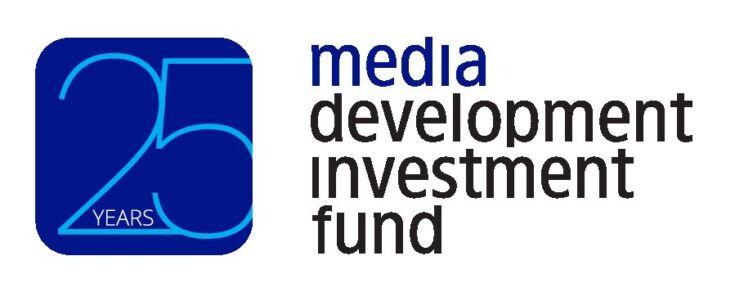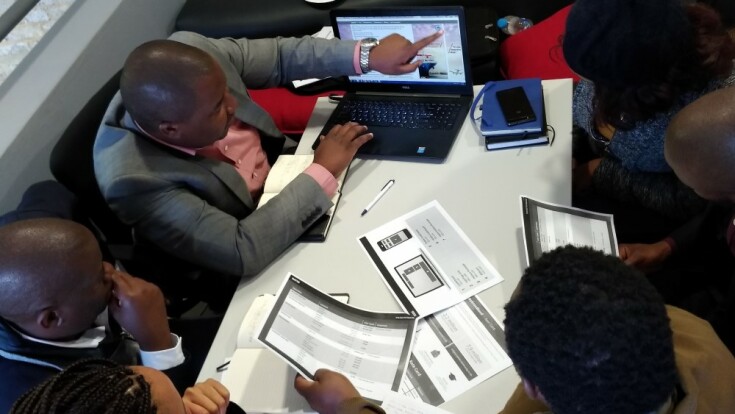By Tessa Piper, Program Director for Southeast Asia.
In addition to the financial investments that make up the core of MDIF’s work, over the past six years we have been contributing to strengthening media ecosystems in several countries where there are widespread threats to journalists and media outlets, troubling declines in press freedom and growing media concentration.
In these countries, we were concerned to realise that an important cohort of independent media were finding themselves in stasis. These media all demonstrated a strong commitment to the production of good quality public interest journalism, were fiercely independent and had successfully built an audience that turned to them for reliable information. But they were unable to grow beyond a certain point because of a lack of access to financing simply because they lacked the expertise to design a long-term strategy for their media and make a business case for their operations that would attract the necessary investment.
MDIF’s response was to design a series of programmes to help these media to grow by developing business knowledge and skills, while also ensuring that their core mission of informing and educating their audiences remained at the heart of their work.
Tailored support for diverse media
We started in 2015 with a business capacity building programme for media in Myanmar, the Myanmar Media Program (MMP). This was followed in 2017 with the launch of our South Africa Media Innovation Program (SAMIP). The Southeast Asia Technical Assistance Initiative (SEATAI) followed two years later and, last year, MDIF began work on a media business capacity building programme in Ethiopia as part of a consortium called Protecting Independent Media for Effective Development (PRIMED).
The media that we work with through these programmes come in a variety of shapes and sizes. Some target a broad audience at the local, national, regional or even international level. Others are more niche, focused on a particular topic or area of interest, or produced for a particular ethnicity or language group. In such cases, these media are often a rare source of news for the audience they are serving which makes their role even more vital, even when catering to a small sector of society.
The platforms they use are also diverse. One media may have one platform that is the primary focus of their output. Others may disseminate content through multiple platforms that may change over time as new platforms emerge.
These media also vary considerably in size. They might comprise a team of just two people, or a few dozen, often including staff who are unable to rely on a regular paycheck because of the uncertain nature of the media’s finances. In almost all instances, those who are fortunate enough to receive a regular monthly income earn a salary considerably below market rates. These are the realities that are widely accepted as being part and parcel of working for an independent media with very modest financial backing.
In some cases, these media have been set up by non-profits, which run them as a division of the main organisation and tend to be wholly or substantially reliant on donor funding to cover costs. In others the founders, or their family and friends, have put their own money into financing the operation.
We have learned a lot from our experiences of working on these programmes.
Long-term commitment
First, this kind of work requires a long-term commitment. Time is needed to get to know the media, to learn about its culture and its operations, and to build mutual trust and respect. One-off or short-term engagements with media to build business capacity are unlikely to have long-term impact. It’s not enough to offer advice to a media about the business strategies they can implement and then just leave them to carry them out alone – a beautiful plan on paper seldom turns out exactly that way when tested in the real world. Inevitably, unexpected problems arise during implementation and, without an experienced advisor on hand to help find solutions, the best prepared plans can swiftly be derailed. Ideally, support of this kind should be multi-year, intensive and closely managed.
Another must is that the technical assistance provided be customised to the specific needs of each media partner. Coming to the table with a ‘cookie cutter’ approach that assumes that what worked with one media can be replicated with another does not work. Each media is unique and needs to be treated as such. Only then is it possible to design and implement a suitable programme of support tailor-made to the individual media’s needs.
It is not enough for coaches to have the technical knowledge relevant to the media they are working with. Engaging as coaches media experts that share some commonality with the media they are working with is often a key to breaking down barriers and establishing a rapport between the executives of the media receiving the coaching and the coaches themselves. We have found that the ideal is to recruit coaches who have worked in senior management positions for independent media in the relevant country or region concerned, or who at least have experience of operating in a comparable media environment. Where relevant specialist skills are unavailable closer to home, we look for experts who are passionate about sharing their knowledge with independent media and who are themselves flexible and willing to learn.
Communication and flexibility
Continued communication is a must and flexibility is key: good programme design is critical, but it is inevitable that there will be a need to make adjustments in response to the reality on the ground. The coup in Myanmar in February demonstrated this all too dramatically. Almost overnight our media partners’ commercial revenue streams dried up. Advertising halted abruptly and independent print media were quickly banned from publication.
MDIF’s response was to extend an initiative we had developed in response to advertising revenue being very badly hit by Covid-19: sponsoring the production and dissemination of public service announcements (PSAs). This PSA initiative currently serves as a financial lifeline to dozens of Myanmar media in an environment in which the media ecosystem has been totally upended, first by a pandemic and then by a coup.
Another important lesson learned is that the greatest, and least, impact can come from unexpected quarters; changing mindsets is possible, but not always. Media that at first glance seem likely to most benefit from a programme of this kind may prove highly resistant to change, while others who are not expected to do so may turn out to be open-minded and enthusiastic to put new ideas into practice.
Last, but not least, measuring impact is hard but possible. Again, a one-size-fits-all approach will not work effectively and careful consideration needs to be taken to determine what it is most appropriate to measure and how best to do so. Though not an exact science, well-designed measurement tools can be critical in enabling the impact of a programme of this kind to be effectively assessed and also, crucially, provide the opportunity for adjustments to be made along the way to increase impact.
When media is missing: A more radical approach
Strengthening media ecosystems is one thing. But what about those parts of the world where there is no media ecosystem to strengthen? This was a question we were confronted with in Indonesia 20 years ago, in several of the most impoverished, conflict-ridden and information-dark parts of Indonesia. Our response was to design a radical programme to build media where none existed in some of the most remote parts of the country.
This would have been impossible if we had not had as our technical partners one of our first Indonesian clients, radio news agency KBR68H (now called KBR), and an Indonesian non-profit, the Indonesian Association for Media Development (PPMN).
Between 2002 and 2012, MDIF and our two Indonesian partners built or rebuilt dozens of radio stations in some of the most remote parts of the country and in areas where they had been destroyed in natural disasters.
In some locations, a lack of electricity meant that we not only had to build the radio stations and train local teams to run them, but we also needed to install alternative energy sources to power them. Solar energy, for example, powered community radio stations that enabled 70,000 people living in the regency of Paniai in the isolated Central Highlands of Papua, and 40,000 people in the Central Sumba regency on the island of Sumba, to get access for the first time to up-to-date information, education and entertainment.
Our most ambitious radio-building project, though, was in another part of Papua’s Central Highlands, in the village of Anyelma, an area where poverty is rampant and basic services such as running water, electricity and telecommunications were unavailable. Lack of access to information resulted in the death of 55 people from hunger in the area in 2005 and it was this that prompted the decision to build a radio station there to end the area’s isolation. To do so, we also had to build a micro-hydro system to power the station, Radio Pikon Ane.
As an indicator of just how important this information source was to the local community, some 5,000 people attended the station launch in 2007, most of whom had walked for hours or even days to participate. When asked why he had done so, one local leader commented: “We have received promise after promise from the government to provide development here. This is the first time anyone has delivered on their promise.” Watch a 5-minute video showing the station launch event here or a 15-minute video about Radio Pikonane here.
It proved to be a ground-breaking programme that had remarkable impact. For example, after the station broadcast news of the long-term closure of eight schools in the area due to chronic teacher absenteeism, the local education department agreed to broadcast messages to teachers via the station advising them to return to their schools and threatening sanctions if they did not. The impact was dramatic, with teachers returning to their posts and, within a matter of weeks, all but one of the eight schools in the area were functioning normally. Health care tips, farming advice and advocacy for women’s rights were all topics addressed on station programmes that helped improve lives.
MDIF’s radio station-building programme was also rolled out following a series of natural disasters around the country in the 2000s. This included rebuilding or repairing 20 radio stations in the far western province of Aceh following one of the deadliest natural disasters in recorded history, the December 2004 Indian ocean tsunami which killed 230,000 people in 14 countries, more than half of them in Indonesia.
Our partner KBR68H, with its network of radio station partners in the province, was the key to our ability to respond quickly and effectively in response to the information blackout that followed. The news agency’s founder led a team to Aceh just days after the tsunami and soon thereafter launched a radio station rebuilding programme so that news about the disaster recovery could be disseminated in the areas affected and beyond. A 13-minute video shows the post-tsunami devastation and KBR68H’s actions to provide support to its radio station partners and the communities they serve.
Firm foundations
While supporting media organisations to develop their business capacity and helping to build outlets where none existed are clearly very different tasks, they have a commonality which they share with all our work: our belief that media support should be designed to meet the needs of media in their own context and be supported by long-term commitment. Whatever the specific media support challenge, we think these principles are a firm foundation on which to build an intervention.

This article is part of our series, ‘25 things we’ve learned’, marking MDIF’s 25th anniversary.
